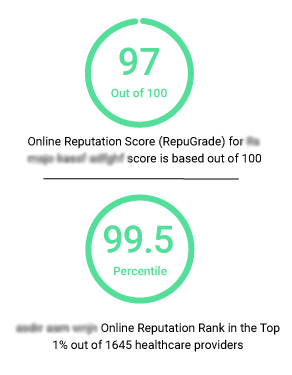Increase in Acceptance of Telemedicine After COVID-19 [A Study]
![Increase in Acceptance of Telemedicine After COVID-19 [A Study] Increase in Acceptance of Telemedicine After COVID-19 [A Study]](/blog/Uploads/telemedicineaftercovid19.png)
Telehealth is a broader term used to define all medical services, and health education delivered digitally. In the last decade, the telemedicine industry has grown steadily. According to Global Market Insights, the market size in 2019 was around $45 billion and is projected to grow to more than $175 billion by 2026.
The tables below show how COVID-19 has accelerated the adoption of Telemedicine across all devices as the viable option to in-office medical consultation:
Table 1: Number of searches on Google per Month in the US for telemedicine and telehealth related keywords
| Keywords | Monthly Search Volume (USA) - Before COVID-19 | Monthly Search Volume (USA) - After COVID-19 | Difference in Search Volume | Difference (In Percentage) |
|---|---|---|---|---|
| Telemedicine | 22,200 | 74,000 | 51,800 | 233.33% |
| Telemedicine Services | 390 | 1,000 | 610 | 156.41% |
| Telemedicine Doctor | 210 | 720 | 510 | 242.86% |
| Telemedicine Near Me | 20 | 720 | 700 | 3500.00% |
| Telehealth | 22,200 | 135,000 | 112,800 | 508.11% |
| Telehealth Services | 1,000 | 4,400 | 3,400 | 340.00% |
| Telehealth Doctor | 70 | 720 | 650 | 928.57% |
| Telehealth Care | 22,200 | 135,000 | 112,800 | 508.11% |
Table 2: Device breakdown data of keywords
| Keywords (Device Breakdown - In Percentage) | Desktop | Mobile | Tablets |
|---|---|---|---|
| Telemedicine | 49.6% | 48.3% | 2.1% |
| Telemedicine Services | 68.5% | 29.9% | 1.7% |
| Telemedicine Doctor | 51.0% | 46.9% | 2.0% |
| Telemedicine Near Me | 37.1% | 60.8% | 2.1% |
| Telehealth | 50.6% | 47.4% | 2.1% |
| Telehealth Services | 57.7% | 39.4% | 2.9% |
| Telehealth Doctor | 40.8% | 57.9% | 1.3% |
| Telehealth Care | 50.6% | 47.4% | 2.1% |
Increase in Acceptance of Telemedicine after COVID-19: Study and Findings
If you are a healthcare provider offering telemedicine and telehealth services to families and communities in a particular region, then you need to ensure that you reach the correct target audience. For this, you should understand the keywords used by patients seeking telemedicine services. Using proper keywords determine how patients will find you when they search for telemedicine service providers in their region.
Table1 demonstrates the changes in the monthly search volume of telemedicine and telehealth related keywords before and after the Covid-19 outbreak. In this research, a set of keywords related to telemedicine and telehealth services were considered. Keywords here are those used by the average patient seeking telehealth.
The number of searches on Google per month in the USA for telemedicine and telehealth related keywords are shown here. The first column shows the data for the month before the Covid-19 outbreak and the next one for the month after. This data was analyzed to find the percentage of increase in search volumes for telehealth services after the Covod-19 pandemic occurred.
Table2 shows the device breakdown data of keyword and shows that most searches for telehealth related services are done on either mobile phones or desktops.
Key Takeaways
In Table1, the terms “Telehealth Care,” “Telehealth,” and “Telemedicine” seem to be the most popular terms among the telemedicine service seekers. The popularity of these terms has spiked since the outbreak of the Covid-19 pandemic.
The term “Telemedicine Near Me” has increased by3500%, followed by a 928.57% increase for search volumes for the term “Telehealth Doctor.” All of the other related terms like “Telehealth Services,” “Telemedicine Doctor” have shown an over 155% increase in their search volumes since the outbreak of the Covid-19 pandemic.
From Table2, we can gather that data search was done almost equally from desktops and mobile devices. For the keywords “Telemedicine,” “Telemedicine Near Me,” and “Telehealth Doctor” mobile devices were used more for searching.
Conclusion
The following conclusions can be drawn from the above findings:
- The current Covid-19 pandemic and new social distancing norms have resulted in more and more people preferring telemedicine and telehealth services over on-site healthcare services.
- With an increase in usage for “Telemedicine Near Me,” it can be inferred that an increasing number of patients are searching for local telemedicine providers. Geomarketing strategies can help to boost your search rank in your region.
- Your practice’s address on your website should be accurate and properly structured. This allows Google to determine the distance of your practice from the searcher’s location. Your website is ranked in the search pages accordingly and affects how you acquire patients. Use paid and organic searches to do so.
- To target the potential customers in a designated area, use correct healthcare keywords paired with a solid geomarketing strategy. This also filters out wasting your marketing resources on patients who are reluctant to visit your clinic due to the distance factor.
- Ensure that your website is tablet and smartphone friendly. Search volumes for mobile devices are either almost equal to or sometimes more than desktop devices. Also, making your website mobile device friendly helps you target customers relying solely on mobile devices.
Related Studies
Recently, we used our proprietary software to conduct a Telemedicine vs. In-Office Visits Patient Satisfaction Survey. Here, the patient satisfaction level of telemedicine and in-office visits was compared. Initial data indicated patient satisfaction with telemedicine to be equal to in-office visits. The satisfaction levels differed among different specializations, but in every case telemedicine showed high acceptance levels. Though the survey seemed hopeful of the trend continuing, it also cautioned that because patient satisfaction depended on healthcare providers meeting their expectations.
Another survey conducted on healthcare practices stressed that healthcare professionals should focus on the “near me” keyword. The increasing usage of mobile devices and voice searches is one of the reasons for this.
Steps Taken by Government to Facilitate Telehealth and Telemedicine
In March 2020, the Trump administration lifted Medicare requirements for telemedicine visits. This simplifies using this technology for patients and doctors. Trump administration has been a willing and engaged partner with the AMA Foundation to expand Medicare coverage for services provided through telehealth and has allowed more providers to accept Medicare payments for virtual visits.
Looking Ahead
From these findings, we can conclude that the implementation and need for telemedicine and telehealth services are growing more than ever before. Prior, the coronavirus pandemic outbreak, the telemedicine trend had slow growth, but with current social distancing norms at public places, clinics, and hospitals the telehealth trend is going to sustain in the future; and as research predicts the telemedicine interactions could even spike up to 1 billion as 2020 ends.
Comments are closed


